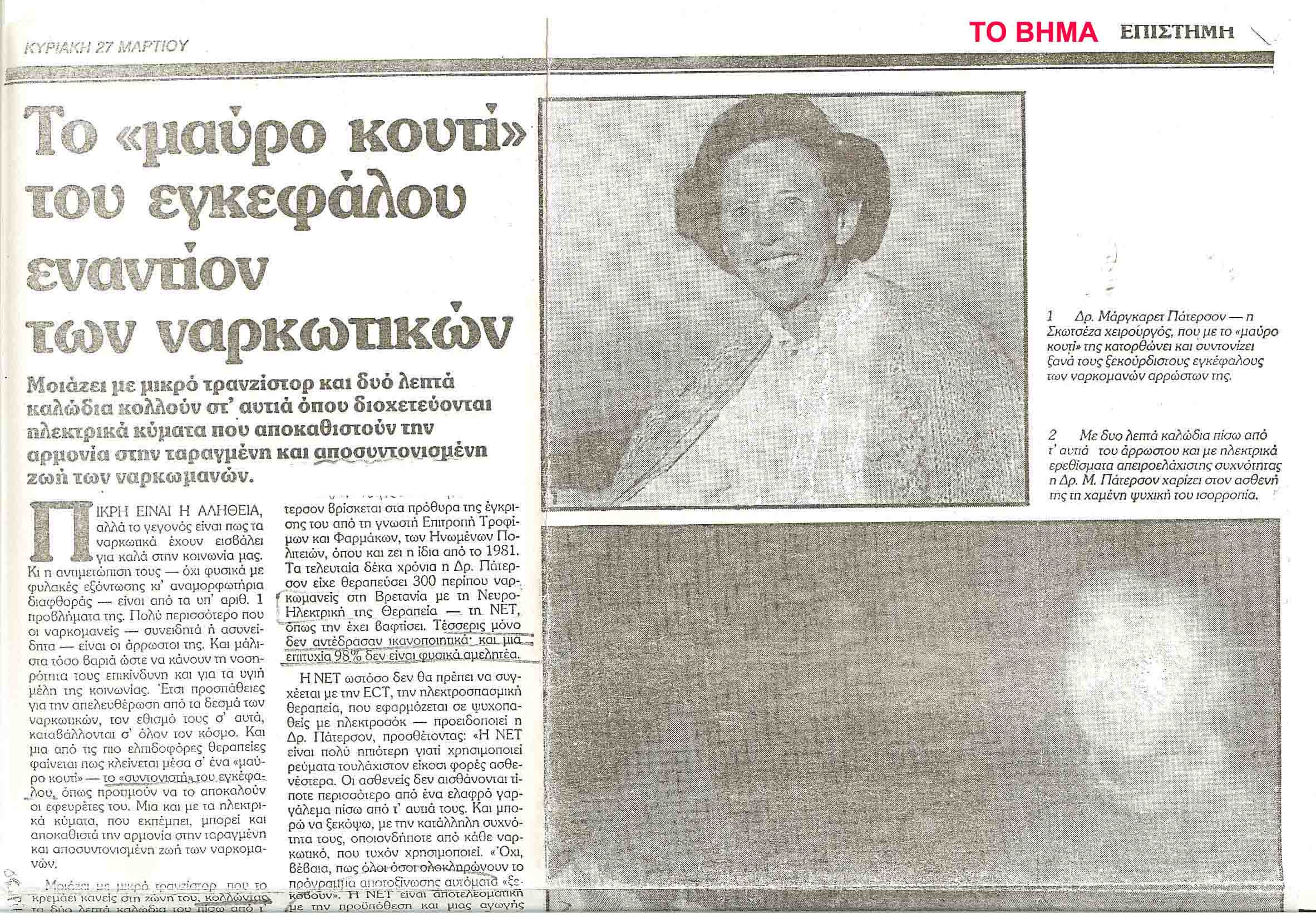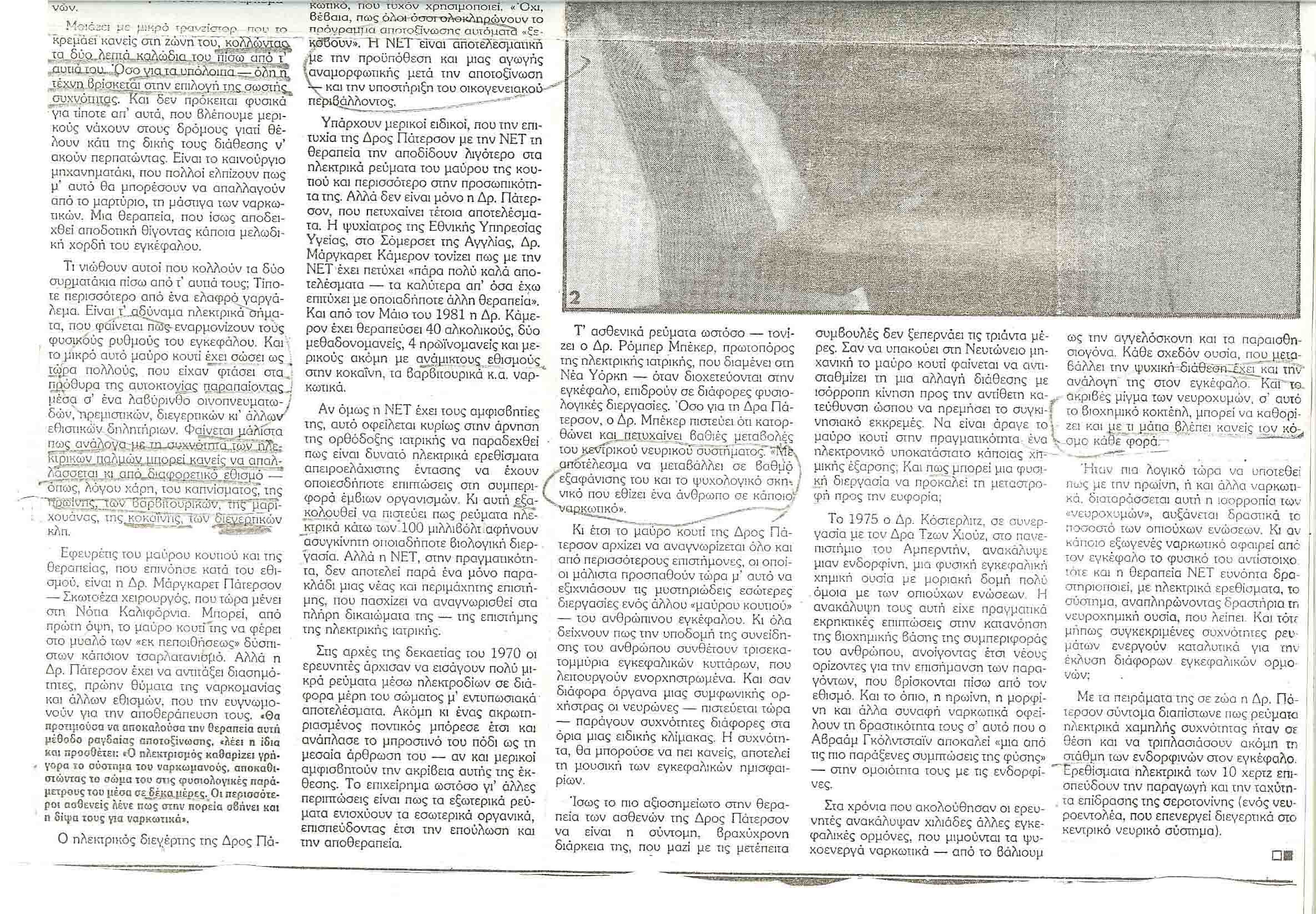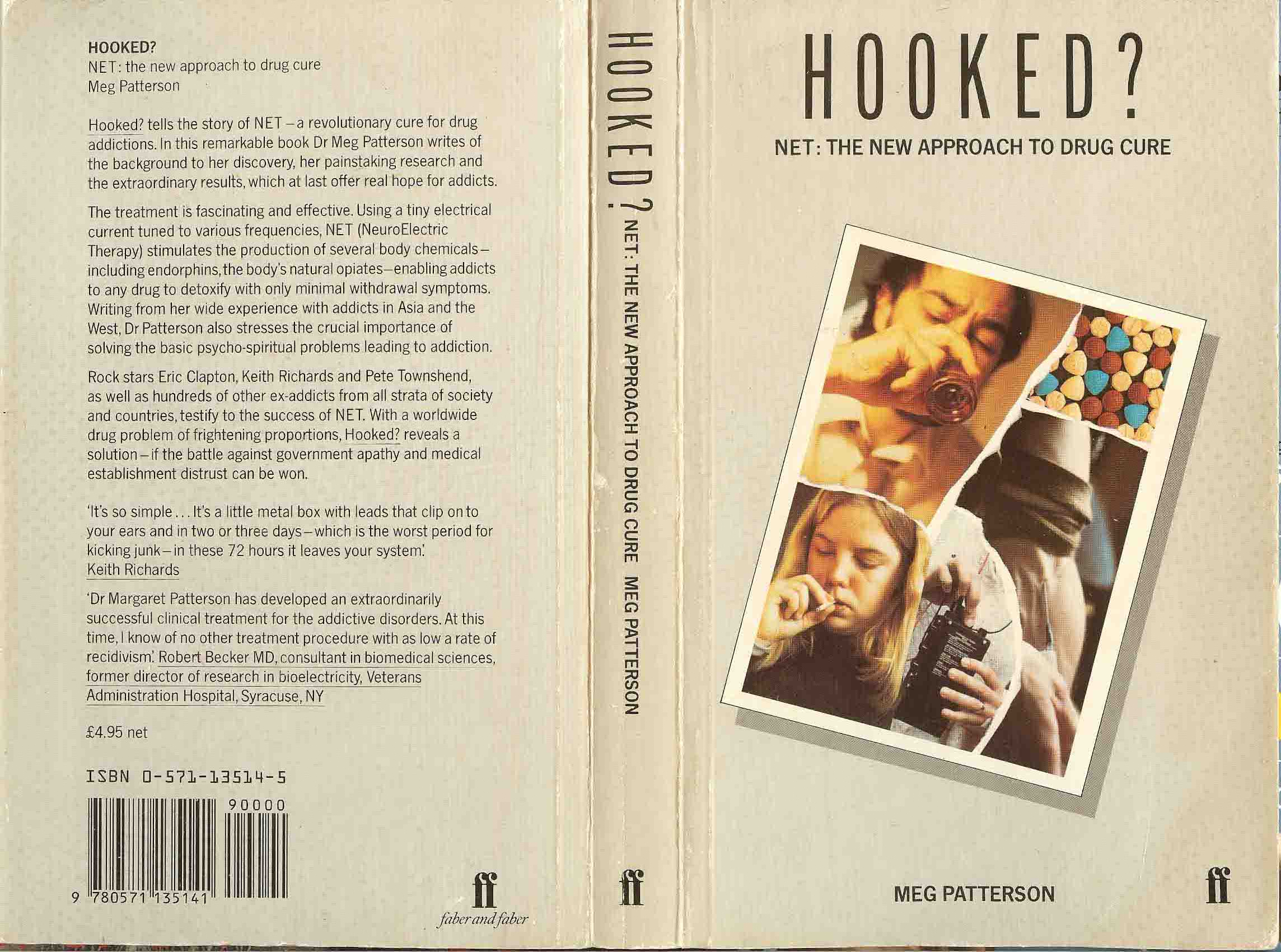Dr. Margaret (Meg)
Patterson M.D.
Pioneer in Electromedicine
www.drmeg.net
Margaret Angus Patterson (née Ingram)
Former medical missionary who became a
pioneer in Electromedicine
Meg Patterson came early to medicine and, in spite of her
sex, also to surgery.
She qualified at the age of 21 during the second world
war, and became FRCS (Edinburgh)—lone woman among the hundred candidates—at
25. She was one of only 20 women who had become fellows, and the only one in
general surgery. Her career took her to independence India as a medical
missionary, where over the next decade she held a number of surgical and
teaching posts. With minimal resources she established and expanded
community hospitals and clinics. For these “outstanding medical services”
she was awarded the MBE in 1961.
Moving to the Far East, Dr Patterson was
appointed surgeon-in-charge of the surgical unit, Tung Wah Hospital, Hong
Kong. Here, along with her neurosurgical colleagues, in 1972 she made the
serendipitous discovery that changed her life and that of her family: that
electro-acupuncture analgesia (as applied for post-surgical pain control)
could also significantly ameliorate the symptoms of opiate withdrawal. The
next year, aged 50, she returned to Britain to pursue clinical and
scientific investigation into the technique, giving up her beloved surgery
to do so.
Convinced of the therapeutic significance of the treatment's
electrical component, and of its medical and social potential,
she developed
the treatment that she named neuroelectric therapy (NET), as a
non-acupuncture, non-pharmacological intervention for the abstinence
treatment of substances of addiction. In doing so, she rapidly became recognised as a pioneer in the field of electromedicine.
She had to battle
the hostility and suspicion that previously marked Western attitudes to
Eastern and “alternative” medicine. But after two decades of commitment
combined with raw Scottish obstinacy, she found herself, once again, with
minimal resources, establishing and expanding community-based clinics and programmes, this time in a number of different countries. And despite
ongoing controversy over the only partially clarified scientific basis of
her electrical technique, her peers in international addiction medicine
acknowledged her “significant contribution” to the treatment of
addiction.
NET became popular with pop stars such as
Eric Clapton, Pete
Townsend, Keith Richards, and Boy George.
Non-drug users such as
Yehudi
Menuhin gave financial backing to her London clinic. Meg Patterson was still
treating patients and pursuing research into NET when, aged 77, she had a
major stroke, from which she never really recovered. She leaves a husband,
George; three children; and five grandchildren.
Margaret Angus Patterson,
née Ingram, specialist in the treatment of addiction (b Aberdeen 1922; q
Aberdeen 1944; MBE, FRCS Ed), d 25
2002
http://www.bmj.com/cgi/reprint/325/7363/550.pdf
click here
or here
http://www.pubmedcentral.nih.gov/articlerender.fcgi?artid=1124070
For more information on NeuroElectric Therapy
contact click here
http://www.netdevice.net/publications.php
News
article
November 12, 2001
:
DRUG ADDICTION EXPERT WHO TREATED ROCK STARS LIKE
ERIC CLAPTON, PETE TOWNSEND
AND KEITH RICHARDS, LEAVES USA FOR EUROPE
By Dan Wooding
GLASGOW, SCOTLAND (ANS) --
In late April of this year, Dr Meg Patterson, the drug addiction expert who
became world famous for her successful treatment of rock music superstars Eric
Clapton, Keith Richards of the Rolling Stones and Pete Townsend of the Who among
other celebrities - suddenly departed from the USA for Europe.
For the past several years "Dr. Meg" had been conducting research and clinical
trials in leading American universities while seeking FDA approval for her
NeuroElectric Therapy (NET) treatment to be used in the USA. At the same time
she cooperated with missionary medical colleagues to establish a charity drug
treatment clinic in the notorious drug center of Tijuana, scene of the
Oscar-winning Hollywood blockbuster film, TRAFFIC.....
click here
http://www.assistnews.net/strategic/s0111032.htm
See also :
Nurs
Times. 1979 Nov 29;75(48):2080-3.
Electrotherapy: addictions and neuroelectric therapy.
Patterson MA.
PMID: 316129 [PubMed - indexed for MEDLINE]
Encephale.
1990 Jul-Aug;16(4):265-7.
[Transcerebral electrostimulation in hypnotic drug
withdrawal]
[Article in French]
Demotes-Mainard J,
Philip P,
Jalfre M,
Vincent JD.
Laboratoire de Sommeil, Hôpital Saint-André, Bordeaux.
This preliminary study attempted to test the efficacy of electrosleep
therapy on hypnotic drug withdrawal. Among 89 outpatients complaining of
chronic insomnia and receiving a heavy hypnotic drug treatment, an
efficient withdrawal associated with a marked improvement of
self-reported sleep was observed in 78% of cases, especially when
insomnia was not related to medical aetiologies or to major psychiatric
disorders. These results suggest further controlled studies to determine
the magnitude of the placebo component in the effect observed.
Publication Types:
PMID: 2209479 [PubMed - indexed for MEDLINE]
- Experience in the treatment of drug
addiction by electro-acupuncture.
Wen HL,
Teo SW.
PMID: 1082838 [PubMed - indexed for MEDLINE]
Ann
Med Psychol (Paris). 1980 Mar;138(3):359-70.
[New method for curing drug addiction using Limoges
current (apropos of 11 cases]
[Article in French]
Daulouede JP,
Daubech MJ,
Bourdalle-Badie C,
Laforge E,
Julian MJ,
Tignol J,
Bourgeois M.
PMID: 6971591 [PubMed - indexed for MEDLINE]
Am J
Chin Med. 1980 Winter;8(4):349-53.

Clinical experience and mechanism of acupuncture and
electrical stimulation (AES) in the treatment of drug abuse.
Wen HL.
Three hundred cases were treated by AES in an out-patient detoxification
setting. Seventy-seven cases completed 14 days of treatment and of these
30 were detoxified. One hundred and twenty-six cases came back for
retreatment and another 19 cases (19/300 = 6.3% or 19/126 = 15.5%) were
detoxified. It was found that the ACTH, cortisol (corticosterone), c-AMP
were elevated during abstinence and these compounds were reduced after
AES treatment. Fraction I of the opiate activity in the brains of mice
was found to be increased after AES. It has been suggested that this
could be a beta-endorphin. Recently it was found that during abstinence
the plasma beta-lipoprotein and and beta-endorphin were elevated but not
reduced after AES. However, the CSF met-enkephalin was within normal
limits during abstinence but greatly elevated after half an hour of AES.
It is suggested that acupuncture affects not only the somatosensory
nervous system but also the autonomic nervous system, as well as the
neuro-endocrine system in drug abusers.
PMID: 6113757 [PubMed - indexed for MEDLINE]







